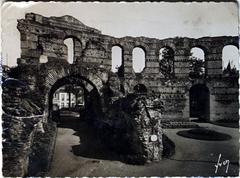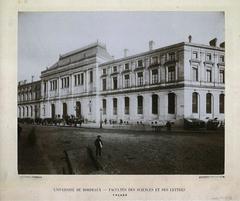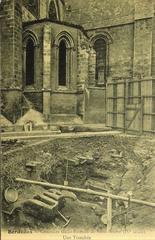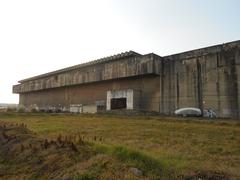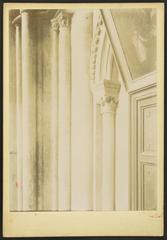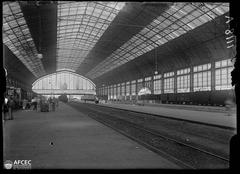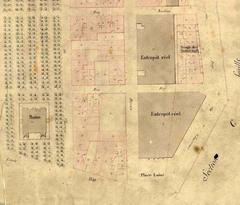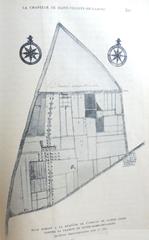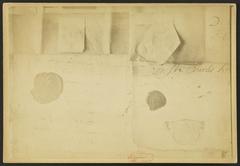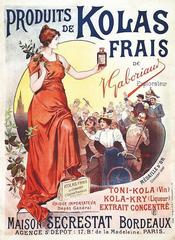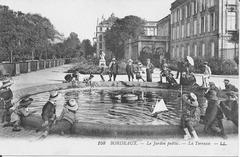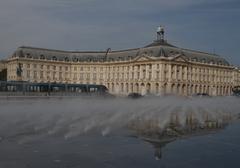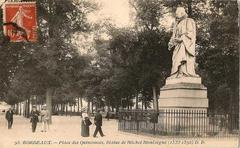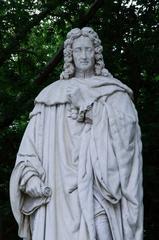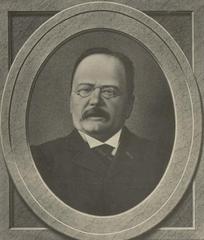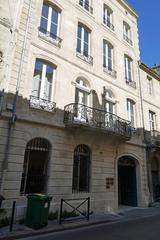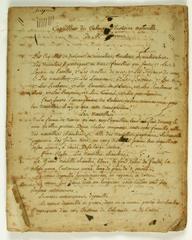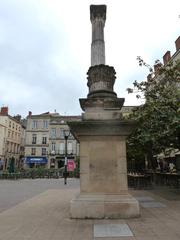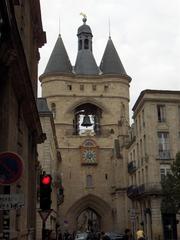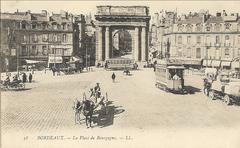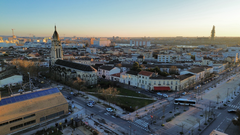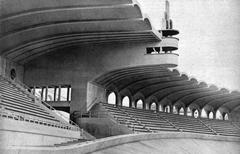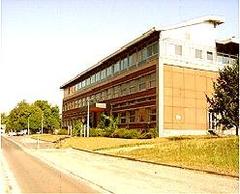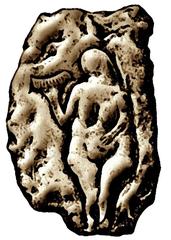
Théâtre De L’Alhambra Bordeaux: Visiting Hours, Tickets, and Historical Significance
Date: 03/07/2025
Introduction
Nestled in the heart of Bordeaux, the Théâtre de l’Alhambra stands as a testament to the city’s rich cultural, architectural, and social history. Although no longer operating as a performance venue, its iconic neo-classical façade—designed by Jean Tournier in 1908—remains a protected Monument Historique and a cherished landmark. This guide provides a comprehensive overview of the Alhambra’s historical evolution, visiting information, accessibility, nearby attractions, and practical tips to enrich your discovery of Bordeaux’s heritage (Sud Ouest, France Bleu, Monumentum).
Table of Contents
- Introduction
- Origins and Early Years (1870–1914)
- Role During the World Wars
- Postwar Golden Age (1945–1970)
- Decline, Closure, and Preservation
- Architectural Features
- Visiting Information
- Accessibility
- Nearby Attractions and Travel Tips
- Frequently Asked Questions (FAQ)
- The Alhambra’s Legacy
- References
Origins and Early Years (1870–1914)
The story of the Alhambra begins in the late 19th century. Established around 1870 on the site of a former circus, the building quickly became a central hub for entertainment in Bordeaux (Sud Ouest). Known for its versatility, the Alhambra hosted operettas, music-hall performances, revue shows, and even transformed for dances and balls thanks to its innovative inclined floor. It was also home to what was then the largest skating rink in Europe, drawing crowds for both recreational skating and sporting events, including boxing matches.
Role During the World Wars
The Alhambra’s civic importance was highlighted during World War I, when Bordeaux briefly served as the seat of the French government. The theatre was converted into the Chamber of Deputies, hosting crucial parliamentary sessions between September and December 1914 (Sud Ouest). Throughout both world wars and the interwar period, the venue continued to serve as a gathering place for political events, public meetings, and cultural performances, reflecting its adaptability to the city’s changing needs.
Postwar Golden Age (1945–1970)
After World War II, the Alhambra entered a golden era. It became a beloved venue for concerts, variety shows, sporting galas, and community festivities. Serving as Bordeaux’s “salle des fêtes,” the Alhambra welcomed everyone—from local schoolchildren to prominent political figures like Jacques Chaban-Delmas. Its flexibility and inclusivity made it a cornerstone of Bordeaux’s social life during the mid-20th century (Sud Ouest).
Decline, Closure, and Preservation
The 1970s marked the beginning of the Alhambra’s decline. Increasing safety regulations, especially after the CES Pailleron fire in 1973, highlighted structural deficiencies and led to the theatre’s closure in the late 1970s. Despite public outcry and petitions from artists, the building was sold to a property developer in 1987. While most of the structure was demolished, the neo-classical façade was preserved and classified as a Monument Historique in 1984. In 1990, a new residential complex was built behind the original façade, ensuring its continued presence in Bordeaux’s urban landscape (Sud Ouest, Monumentum).
Architectural Features
Located at 36 rue d’Alzon, near Bordeaux’s Mériadeck district, the preserved façade is a striking example of early 20th-century neo-classical design. Created by Jean Tournier in 1908, it features ornate mascarons, sculpted female faces, and balconies, all symbolizing the theatre’s artistic heritage (Wikipedia). The façade stands as an enduring emblem of Bordeaux’s “Belle Époque,” although the original auditorium no longer exists.
Visiting Information
- Viewing the Façade: The façade is accessible from rue d’Alzon at all times. There is no admission fee or ticket required, as the interior is now private residential property.
- Photography: Daylight hours are best for capturing the façade’s decorative details.
- Guided Tours: Some local heritage walking tours include the Alhambra. For schedules, consult the Bordeaux Tourism Office.
- Special Events: The Alhambra façade sometimes features in events such as the European Heritage Days, with guided walks and presentations (Monumentum).
Accessibility
- Physical Access: The site is accessible to visitors with reduced mobility from the street, with flat sidewalks and nearby public transport.
- Public Transport: Trams B and C have stops at Place de la Bourse and Quinconces, a short walk from the Alhambra.
- Parking: Public parking is available in the area. Holders of disability parking cards can register for free parking via the Flowbird app or at parking meters (Bordeaux Tourism – Accessibility).
Nearby Attractions and Travel Tips
- Palais Gallien: Roman amphitheater within 300 meters.
- Grand Théâtre de Bordeaux: Iconic opera house.
- Place de la Bourse: Renowned square along the Garonne river.
- Marché des Capucins: Lively local market.
- CAPC Museum of Contemporary Art: Accessible and close by.
Combine your visit to the Alhambra with these sites for a richer Bordeaux experience. Walking tours often incorporate several of these landmarks.
Frequently Asked Questions (FAQ)
Can I visit inside the Théâtre de l’Alhambra?
No, the interior is now private residences and not open to the public. The façade is viewable from the street.
Are there entrance fees or tickets?
No, there is no admission fee to view the façade.
What are the best times to visit?
The façade can be viewed at any time. Daytime visits are recommended for best visibility and photography.
Are guided tours available?
While no regular tours are dedicated to the Alhambra, some Bordeaux walking tours include it as a point of interest. Check with the Tourism Office.
Is the site accessible?
Yes, sidewalks are accessible and nearby public transport serves the area.
Does the site participate in special events?
Yes, especially during European Heritage Days with occasional guided walks and presentations (Monumentum).
The Alhambra’s Legacy
Though the Théâtre de l’Alhambra no longer hosts performances, its preserved façade remains a poignant symbol of Bordeaux’s creative and civic spirit. From its origins as an entertainment hub to its role during pivotal moments in French history, the Alhambra’s story reflects the evolution of public spaces and the enduring value of heritage conservation. Today, it continues to inspire admiration and curiosity among locals and visitors alike.
References
- Sud Ouest
- France Bleu
- Monumentum
- Bordeaux Tourism Office
- Wikipedia
- Gralon
- Identification Patrimoine Bordeaux Métropole
Final Tips
- To enhance your visit, consider downloading the Audiala app for immersive audio guides and up-to-date information on Bordeaux’s historical sites.
- For accessible tourism resources, guided tour bookings, and event calendars, consult the Bordeaux Tourism Office.
- The Alhambra’s façade, a silent witness to Bordeaux’s vibrant past, is an essential stop for anyone exploring the city’s architectural and cultural heritage.

